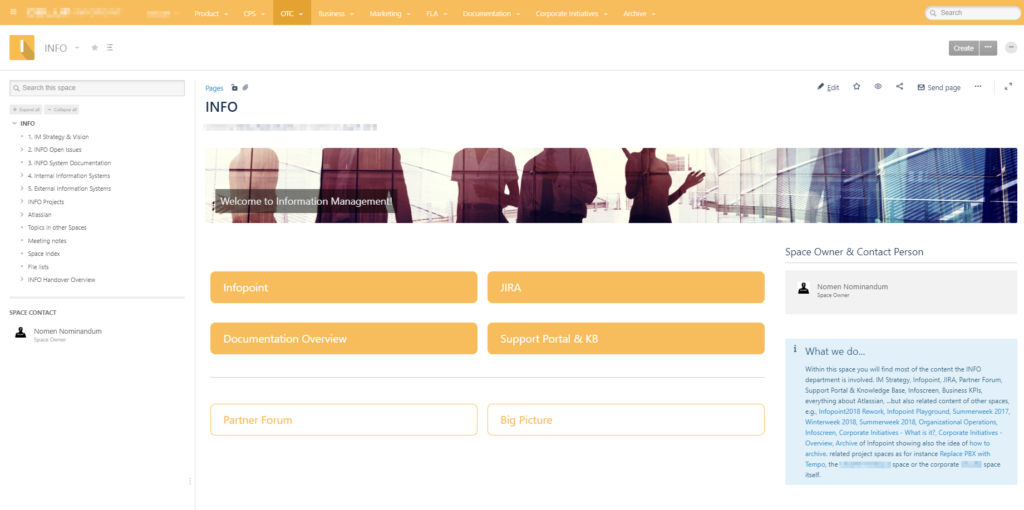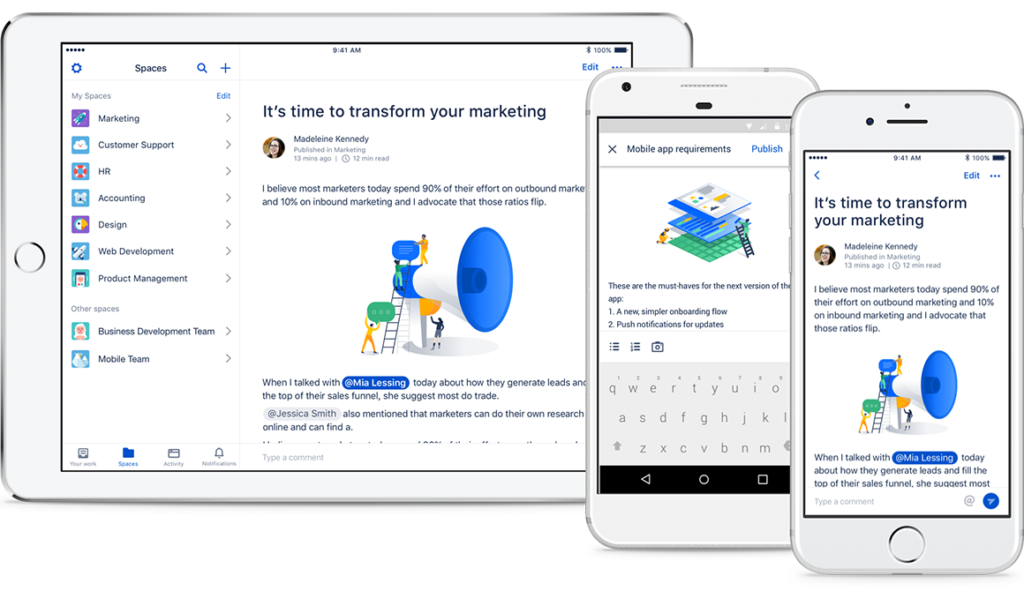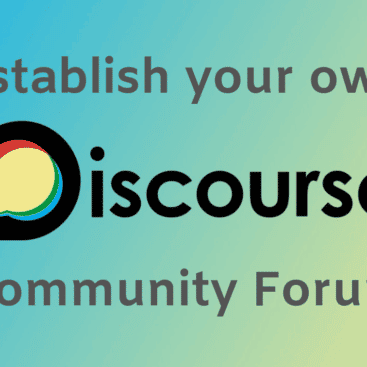Atlassian Confluence
Contribution
- Restructure entire Confluence instance
- Redesign and enhance the layout
- Added new features that ease the workflow
- Major upgrade/migration to the latest version
- Confluence as social Intranet
Atlassian Confluence is an extremely powerful team collaboration software. Atlassian itself calls Confluence an open and shared workspace, and yes that is what it can be if it is customized to the individual needs of a collaborative team or organization. Atlassian says, “unlike document and file-sharing tools, Confluence is open and accessible, helping your team, and your company do their best work together”. I personally worked a lot with Confluence. I designed the structure, essential workflows, customized it to the individual organization’s needs, administrated the system and simply used it as an ordinary user on a daily basis. The result, in my daily business there is no more need for Microsoft Word, I hardly store files on my network drive, and I tremendously reduce the amount of (anyway not quite efficient back and forth) emailing. Email is still a useful instrument, but simply should not be the tool to store and manage all your valuable information and data. I hope I can contribute to further spread the message: (i) the usage of network drives should be limited to specific use cases only, and (ii) result-driven collaboration which is often done by creating textual and visual content, interaction, and efficient decision making must be handled in appropriate wiki-style web systems. Collaboration, corporation, establishing meaningful goals, doing the right things and doing the things right is essential. From my point of view a team collaboration software is the instrument to strengthen the supporting processes to reach those goals.
https://www.atlassian.com/software/confluence
https://www.atlassian.com/software/confluence/features

In the organization in which I first learned about Atlassian Confluence itself, I also learned to love their products, but moreover their philosophy, values, and the message Atlassian wants to spread when it comes to the new way of working as a team. Of course, it might be that delivering such an image is part of the marketing strategy of Atlassian, however, their achievements speak for themselves. From my point of view, it is easier to introduce Confluence (or other wiki-style based team collaboration software) to an organization, than changing structures, introducing new features, and adapt user behaviors in working with an already established solution. Many people simply do not like change. It’s in our nature that we seek for stability, so we accept many pain points to just keep the available systems and processes up and running.

Quite frequently tools, systems, and processes are set up once and left alone from that point on. The project ends, as soon as a workflow is able to be completed, and as soon it is possible to click a button to run an app. However, it should not end there, as it is essential to invest in training, feedback, evaluation and reflection, and ongoing improvement. People should run the extra mile, companies should do as well.

Confluence was already heavily used in the organization in which I learned to love Atlassian. So what was missing and what was my goal? From my point of view, a lot of money was invested in the licensing of the product. It was not even taken care of how to save license costs. In one sentence said, the potential of Confluence was not even closely harnessed. It is like having a superpower and using only 10 percent of it.
I gave Confluence not only a new look and a new structure but showed and taught people how to work with it and with each other efficiently. I established a social Intranet (c.f., Linchpin from Seibert/Media and Refined), made people use Confluence in their daily business the right way. Confluence is used as Intranet, for project planning, to share and collaborate on brainstormings and meeting notes, for internal and corporate-wide blog posts, as well as a discussion and decision-making platform.

My goal was to establish permanent spaces for each department or team, and besides that dynamic spaces for projects across teams. Moreover, each individual should find her/his space, no matter if it is for a quick brainstorming or private notes. No more text-files, everything in one system: increase transparency, persistence, make content and references be found easily, and simply make it fun to use Confluence at daily work. A dashboard for each team or project increases the transparency within a (project) team. The main landing page, on the other hand, shows corporate-relevant information and allows to set up personal interests to show news from selected other teams and projects. It is fun to see how change happens and how the static system becomes alive, filled with great ideas, daily contribution, and meaningful exchange between employees.
The main challenge in such a project is always connected to resources, no matter if it is budget or human resources. Users who work with Confluence must be included and accompanied in the change process. That also means that they must be able to spend time to give feedback, raise there voice. In the end, it comes back to the management and culture of an organization – but that can be probably said about every project. What I definitely learned is that it needs a team to introduce team-collaboration software. If you want that people love it, include them, open up, do not force them. If this is supported by the organization and management there is nothing to lose – go for the change and make it better.




